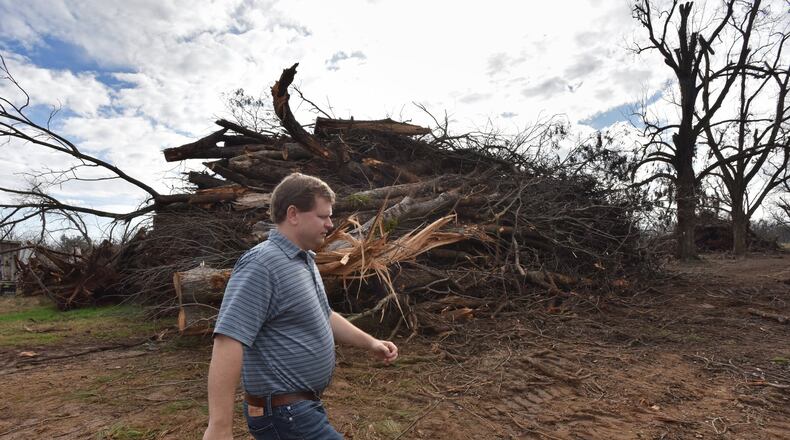More than 500 days after Hurricane Michael flattened crops and livelihoods in southwest Georgia, a fresh infusion of emergency aid money is on its way.
Top state officials on Wednesday announced a $347 million grant program aimed at farmers and landowners in 95 south Georgia counties who sustained major losses during the historic storm, which made landfall in October 2018 as a Category 5 behemoth.
Agriculture Commissioner Gary Black said the program will cover crop and equipment losses, as well as damage to timber and pecan orchards that are typically excluded from federal aid programs. Trees sustained generational damage during the storm, costing farmers millions in lost future income. It takes trees years to become fully productive once they’re replanted.
“We thought it was very important to have a program that would answer the challenges for timber, pecans and all of those commodities,” Black told The Atlanta Journal-Constitution. “They had such extraordinary losses.”
The grants will also cover damage to poultry, beef, dairy, fruit and vegetable crops, as well as some destroyed irrigation systems, farm structures and uninsured equipment.
Farmers can apply for the aid through a new website set up by the Georgia Department of Agriculture, farmrecovery.com, for three weeks beginning on March 18. Black estimated the money will begin flowing this spring.
The money comes from the $19 billion emergency spending package Congress passed in June after nearly a year of partisan brinksmanship over aid for Puerto Rico.
The U.S. Department of Agriculture, led by former Georgia Gov. Sonny Perdue, began releasing $3 billion in relief this fall to farmers reeling from natural disasters across the country. Cotton and peanut farmers have been eligible for that funding, but multiple farmers told the AJC this week that the money has been slow to trickle down to southwest Georgia.
At a Wednesday press conference surrounded by state lawmakers and agriculture officials, Gov. Brian Kemp directed his comments toward still-hurting farmers.
“We know this was a generational event, and it will take a long time to recover,” Kemp said. “But we continue to fight for you.”
In the months after the funding cleared Congress, Georgia officials — advised by a task force of rural businessmen, commodity groups and the University of Georgia’s Cooperative Extension — began working with the USDA to set the guidelines for the block grants, which had long been championed by Black and Gov. Brian Kemp.
UGA previously estimated that Michael caused upwards of $2.5 billion in agricultural damages to the state.
“The health of the rural community is riding on us doing a very good job,” Black said.
Dozens of federal agencies are divvying up the rest of Congress' disaster relief money, which will go toward repairing roads, housing and other damaged infrastructure across the country.
Bainbridge agribusinessman Tommy Dollar, who operates a farm with his son and served on Black’s task force, said farmers in his corner of the state have faced countless setbacks in the 16 months months since Michael hit.
“To have lost it all in one month in 2018 and have to wait 500-something days before they get the money has been very hard mentally and physically on a lot of people,” he said. “But it feels good today.”
About the Author
Keep Reading
The Latest
Featured


